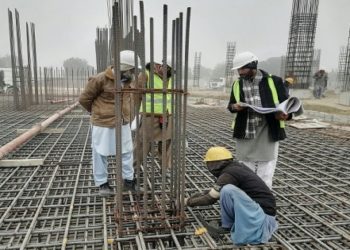Over the past few years, Nairobi’s high-end residential market has undergone a subtle but significant shift. Once among the most stable and lucrative sectors in the city’s real estate portfolio, the upmarket rental segment is now facing structural changes, driven in part by reductions in foreign aid and a declining expatriate presence.
These changes began taking root during the Trump administration, when U.S. foreign assistance to several African countries, including Kenya, was trimmed as part of a broader strategy to scale back international development spending. While the full impact of these cuts was distributed across sectors like health, education, and governance, there was also a notable effect on the country’s expatriate footprint, particularly in Nairobi, which hosts a large share of international development activity.
As donor-funded programs scaled down and relocated regional offices to countries with more favorable operational costs, the demand for housing among foreign personnel has dropped. Landlords in traditionally expatriate prone areas such as Runda and Muthaiga began to notice an increase in vacancy rates and longer listing periods. While these neighborhoods still attract diplomats and multinational executives, the number of long-term leases has declined.
This trend has put pressure on landlords who tailored their properties exclusively to the international market. Many of these homes are large, serviced residences with high rental expectations, often quoted in U.S. dollars. With fewer expatriates to absorb this supply, property owners have had to adjust. Some have lowered asking rents, introduced incentives like free utilities, or shifted to Airbnb and other short-term rental platforms. Others are converting larger homes into multi-unit apartments or offices, especially where zoning allows. Beyond property owners, the decline in demand has had secondary effects on the informal and semi-formal economy. Expatriate households typically employed a small support workforce such as domestic workers, private security and nannies. Fewer tenants means fewer jobs for these workers, and in some cases, reduced hours and wages. For families relying on this employment, the shift is being felt.
This period of transition also raises broader questions about the structure of urban development in Nairobi. The heavy focus on serving foreign tenants created a niche market somewhat insulated from local housing realities. Now, with that demand softening, the market is being forced to align more closely with domestic needs and economic conditions. Long term, this could encourage more sustainable investment. There is growing interest in mixed-use developments and more adaptable spaces that serve a broader demographic. Additionally, the government’s emphasis on affordable housing may shift some investment away from speculative luxury housing into projects with wider utility.
Nairobi’s upmarket housing slowdown reflects a changing geopolitical and economic context one in which global aid dynamics, local development strategies, and investor behavior intersect. For communities built around the old model, it is a time of adjustment. However, for the broader market, it may be an opportunity to rethink what sustainable, inclusive urban development should look like in the years ahead

















